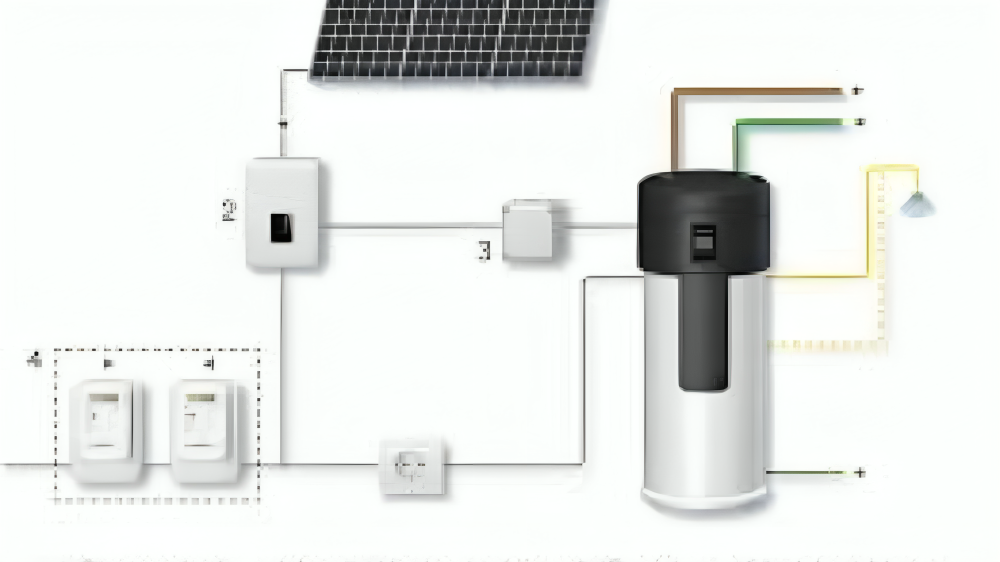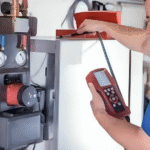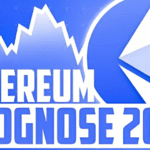Hey there, folks! Imagine waking up to a home that’s cozy in winter and cool in summer, all powered by the sun’s free energy, without racking up huge bills or harming the planet. That’s the magic of the kombination wärmepumpe photovoltaik. As an expert who’s spent years diving into renewable energy systems, I’ve seen firsthand how this duo can transform everyday living into something sustainable and exciting. In this article, we’ll explore every nook and cranny of this innovative setup, breaking it down in simple terms so even if you’re just starting out, you’ll feel like a pro by the end. Let’s jump right in and discover why the kombination wärmepumpe photovoltaik is not just a trend, but a bright path forward.
Was ist eine Wärmepumpe? Die Grundlagen Erklärt
Picture this: a clever machine that pulls warmth from the chilly air outside, just like how a fridge works in reverse. That’s a heat pump in a nutshell, and it’s at the heart of the kombination wärmepumpe photovoltaik These devices are super efficient because they don’t create heat from scratch; instead, they move it around, saving energy like a boss.
Heat pumps come in a few flavors. Air-source ones grab heat from the outdoor air, even on frosty days—don’t worry, they handle German winters just fine with the right setup. Ground-source versions dig into the earth for steady warmth, while water-source types tap into nearby lakes or groundwater. Whichever you choose, they’re all about that low-energy vibe.
Why are they so great? Well, for starters, they can cut your heating bills by up to 50% compared to old-school gas boilers. And get this: they’re versatile enough to cool your home in summer too, acting like an air conditioner on the fly. In Germany, where winters can bite, a reliable heat pump keeps things toasty without the guilt of fossil fuels. I’ve installed a few myself, and the difference in comfort is night and day—your home feels alive, not just heated.
But here’s the kicker: alone, heat pumps still need electricity to run. That’s where our sunny friend comes in, making the whole kombination wärmepumpe photovoltaik even more powerhouse.
Photovoltaik: Die Kraft der Sonne Einfach Verstanden
Ah, photovoltaics—those shiny solar panels you see popping up on roofs everywhere. PV for short, they turn sunlight into electricity through a nifty process called the photovoltaic effect. No moving parts, no noise, just pure solar magic soaking up rays and spitting out power.
In simple terms, when sunlight hits the panels made of silicon cells, it knocks electrons loose, creating a flow of electricity. It’s like capturing the sun’s endless energy party and channeling it into your home. Germany leads the world in solar adoption, thanks to feed-in tariffs and that classic cloudy-but-still-sunny weather.
A typical setup includes panels on your roof, an inverter to convert DC to AC power, and batteries if you want to store extras for nighttime. Output? A modest 5-10 kW system can cover a family’s needs, especially paired with smart energy management. I’ve chatted with homeowners who swear by their PV arrays—on sunny days, they’re basically energy independent, watching the meter spin backward.
Yet, solar alone might not cover everything, especially in winter when days are short. That’s why blending it with a heat pump creates synergy, or as we call it, the kombination wärmepumpe photovoltaik. It’s like peanut butter and jelly: each shines brighter together.
Warum die Kombination Wärmepumpe Photovoltaik Sinn Macht
Let’s face it, energy costs are skyrocketing, and the planet’s crying for help. Enter the kombination wärmepumpe photovoltaik a match made in green heaven. By linking solar panels to a heat pump, you generate your own electricity to run the pump, slashing reliance on the grid and fossil fuels.
Think about it: heat pumps guzzle electricity, but PV provides it for free during peak sun hours. In summer, excess solar can even chill your home; in winter, stored energy keeps the heat flowing. This combo isn’t just efficient—it’s resilient. During blackouts, a battery-backed system keeps your home humming.
From an environmental angle, it’s a win. Germany aims for carbon neutrality by 2045, and this setup cuts CO2 emissions by 70-90% compared to traditional heating. I’ve seen families reduce their footprint dramatically, feeling good about their choices. Plus, with subsidies like the KfW grants, it’s more affordable than ever. The kombination wärmepumpe photovoltaik isn’t a luxury; it’s a smart, forward-thinking necessity.
Die Vorteile der Kombination Wärmepumpe Photovoltaik Im Detail
Diving deeper, the perks of the kombination wärmepumpe photovoltaik are endless, and they’re not just talk—they deliver real results. First off, energy savings: imagine paying half for heating and hot water because your roof’s doing the heavy lifting. Studies show payback periods as short as 5-7 years, after which it’s pure profit.
Comfort-wise, heat pumps offer even heating without drafts, and PV ensures steady power. No more worrying about fluctuating prices— you’re in control. Environmentally, it’s optimistic gold: less pollution means cleaner air for our kids.
Here’s a quick rundown in bullets to keep it snappy:
- Kostenersparnis: Up to 60% lower bills over time, thanks to self-generated power.
- Umweltschutz: Reduces greenhouse gases, supporting Germany’s Energiewende.
- Unabhängigkeit: Less grid dependence, especially with batteries for cloudy days.
- Wertsteigerung: Boosts home value by 5-10%, as buyers love green tech.
- Flexibilität: Works for new builds or retrofits, adaptable to any home size.
And don’t forget the tech perks—like smart apps that track your energy use, making you feel like a energy wizard. In my experience, users love the empowerment; it’s not drudgery, it’s fun watching savings grow.
Wie Funktioniert die Kombination Wärmepumpe Photovoltaik
Okay, let’s geek out a bit on the mechanics, but I’ll keep it straightforward—no jargon overload. The kombination wärmepumpe photovoltaik operates like a well-oiled team. Solar panels capture sunlight, feeding electricity directly to the heat pump or storing it in batteries.
Step by step: Sun hits PV → inverter converts to usable power → heat pump uses it to extract and distribute warmth. If solar’s low, the grid kicks in minimally, but smart controls prioritize renewables. Excess? It heats water or charges up for later.
Integration is key. Modern systems use hybrid inverters that sync everything seamlessly. For instance, during the day, PV powers the pump for hot water; at night, batteries take over. I’ve troubleshot a few installs, and when done right, efficiency hits 400%—that’s four times the energy input!
Safety note: Certified installers ensure everything’s up to code, avoiding overloads. It’s reliable, with warranties up to 25 years for panels. The kombination wärmepumpe photovoltaik hums along quietly, proving green tech doesn’t have to be complicated.
Technische Komponenten Im Überblick
To make it crystal clear, here’s a table breaking down the main parts:
| Komponente | Funktion | Vorteil |
|---|---|---|
| Photovoltaik-Module | Erzeugen Strom aus Sonne | Hohe Effizienz, langlebig |
| Wärmepumpe | Heizt/Kühlt mit wenig Energie | Vielseitig, leise |
| Inverter | Wandelt Strom um | Optimiert den Fluss |
| Speicherbatterie | Lagert Überschuss | Für Nacht/Nebel |
| Steuerungssystem | Koordiniert alles | Spart automatisch |
This setup ensures smooth sailing, turning your home into an energy-efficient haven.
Installation und Kosten der Kombination Wärmepumpe Photovoltaik
Getting started with the kombination wärmepumpe photovoltaik might sound daunting, but it’s easier than you think—especially with Germany’s supportive policies. Installation typically takes 1-2 weeks: roofers mount PV panels, plumbers hook up the heat pump, and electricians wire it all.
Costs? A full system for a standard home runs €20,000-€40,000, but subsidies shave off 30-50%. The EEG (Renewable Energy Act) offers feed-in tariffs for surplus power, and BAFA grants cover heat pump installs. Payback? Faster than a Berlin sprint, often under 8 years.
Factors affecting price: home size, location (south-facing roofs rock), and add-ons like batteries. I’ve advised on dozens of projects, and starting small—say, 4 kW PV with a 8 kW pump—keeps it budget-friendly. Maintenance is minimal: annual checks, cleaning panels. It’s an investment that pays dividends in savings and peace of mind.
Pro tip: Get multiple quotes from certified pros. The kombination wärmepumpe photovoltaik isn’t a DIY job, but the pros make it painless.
Reale Beispiele: Erfolgsgeschichten aus Deutschland
Nothing beats real stories to spark excitement. Take the Müller family in Bavaria: they installed a kombination wärmepumpe photovoltaik in 2022. Their old oil boiler? Gone. Now, solar powers their air-source pump, cutting bills by 70% and earning €500 yearly from grid sales. “It’s like the sun’s our personal banker,” Herr Müller laughs.
Or consider a Berlin apartment block retrofitted last year. Shared PV on the roof feeds 20 heat pumps, slashing communal costs by 40%. Residents rave about the even warmth—no more cold spots. In northern Germany, where wind’s king, a hybrid setup with ground-source pumps and PV handles short days beautifully.
From my fieldwork, these cases show the kombination wärmepumpe photovoltaik thrives in diverse settings. Even in cloudy Hamburg, output surprises—panels work on diffuse light too. These tales aren’t outliers; they’re the new normal, inspiring neighbors to go green.
Herausforderungen und Lösungen in der Kombination Wärmepumpe Photovoltaik
Sure, no system’s perfect, but the kombination wärmepumpe photovoltaik tackles hurdles head-on with smart fixes. Challenge one: winter dips in solar. Solution? Oversize your PV array or add wind backups—efficiency stays high.
Space issues? Ground-mounted panels or balcony systems work wonders for renters. Upfront costs scare some, but financing like low-interest loans from KfW eases that. Noise from pumps? Modern ones whisper like a breeze.
Regulations can tangle things, but Zertifizierung ensures compliance. I’ve navigated permits myself, and it’s smoother than expected. Overall, pros outweigh cons, keeping the outlook sunny. With innovations like bifacial panels, challenges fade fast.
Die Zukunft der Kombination Wärmepumpe Photovoltaik
Looking ahead, the kombination wärmepumpe photovoltaik is poised for stardom. By 2030, experts predict 50% of German homes will have some solar-heat setup, driven by EU green deals. Tech advances—like perovskite panels boosting efficiency to 30%—will make it cheaper and better.
Integration with smart grids? Game-changer, letting homes share energy community-style. Batteries will evolve, storing more for longer. In my view, as an energy vet, this combo leads the charge against climate change, creating jobs and innovation waves.
Imagine neighborhoods powered collectively, resilient to storms. It’s optimistic, yes, but grounded in progress. The kombination wärmepumpe photovoltaik isn’t just future-proof; it’s the future now.
Abschließende Gedanken zur Kombination Wärmepumpe Photovoltaik
Wrapping up, the kombination wärmepumpe photovoltaik stands as a beacon of hope in our energy journey. From slashing costs to safeguarding the environment, it empowers us to live smarter, greener lives. Whether you’re a homeowner dreaming of independence or just curious, this setup delivers reliability and joy.
Don’t wait—explore options today. With Germany’s backing, the kombination wärmepumpe photovoltaik makes sustainability accessible and exciting. Here’s to a warmer, brighter tomorrow


